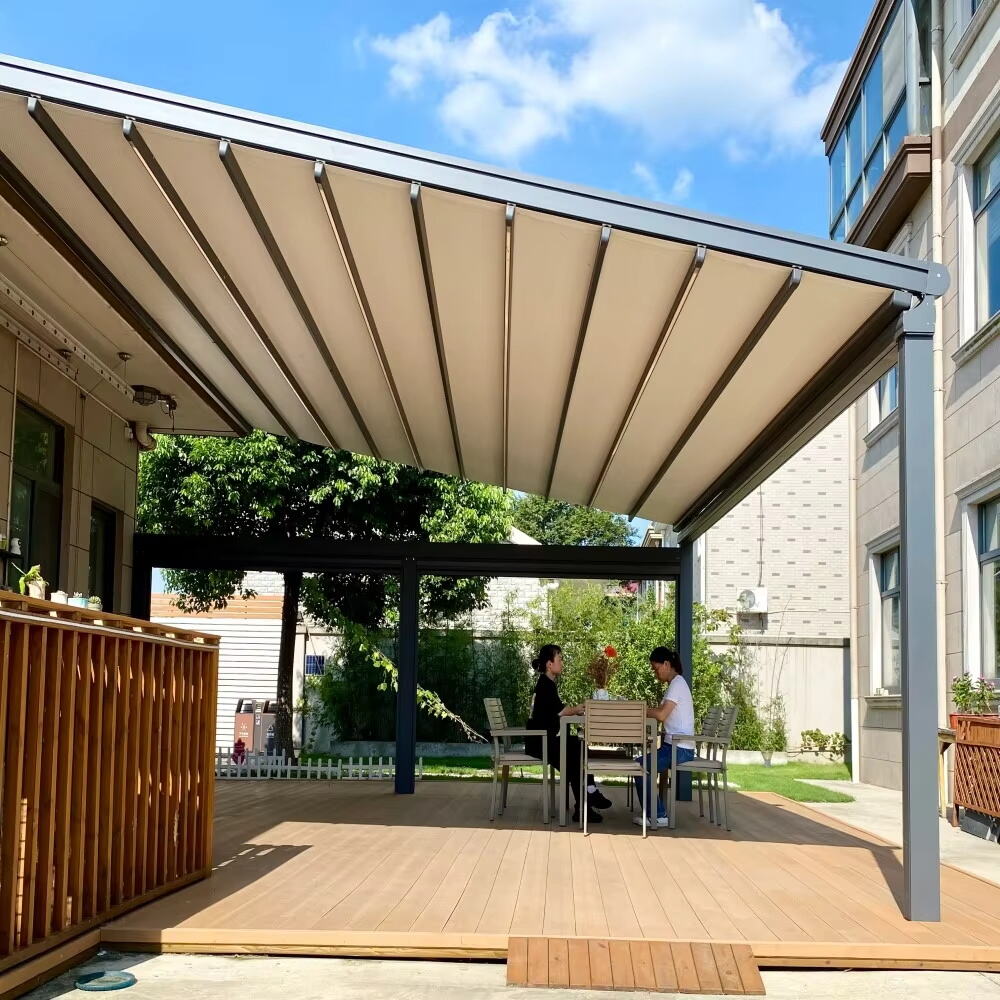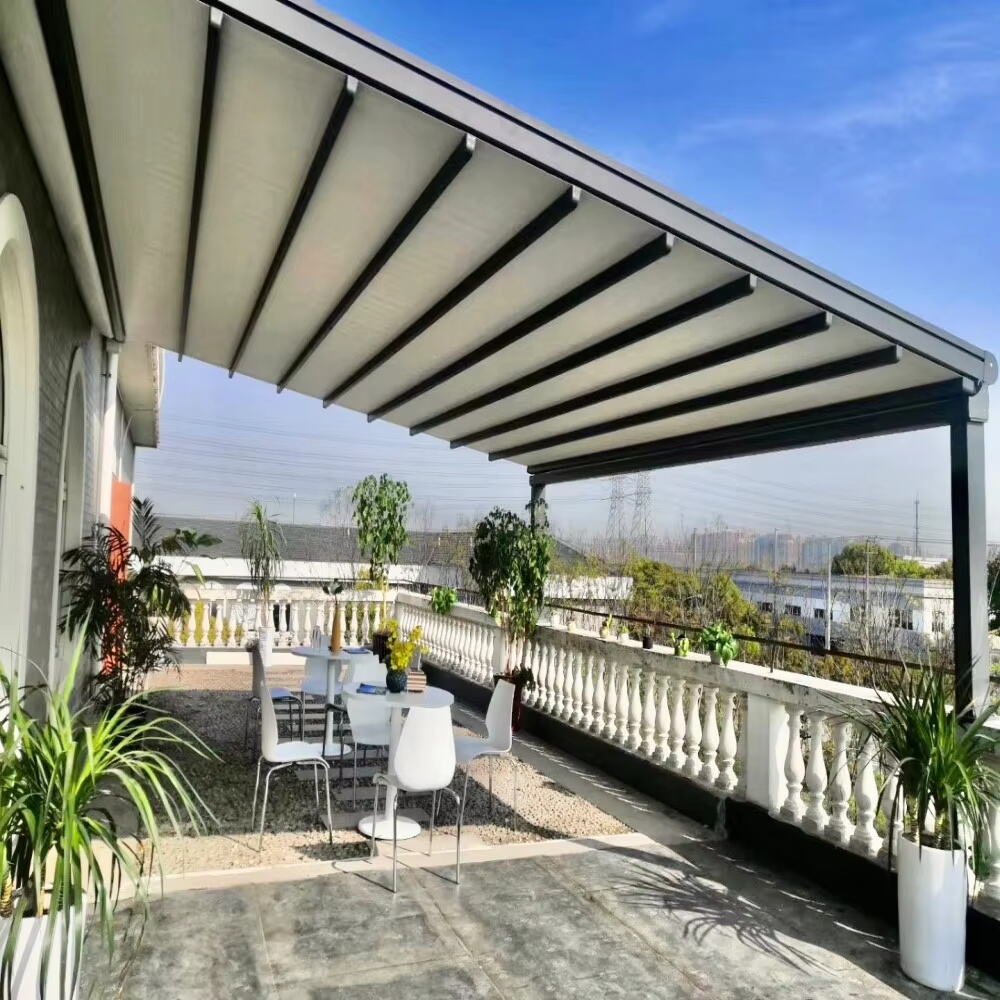Transform Your Outdoor Living Space with an Elegant Pergola Design
Creating the perfect outdoor oasis has become increasingly important as homeowners seek to maximize their living spaces and embrace the natural environment. A pergola stands as a remarkable architectural element that seamlessly bridges the gap between indoor comfort and outdoor living. These versatile structures not only add visual appeal to your landscape but also create a defined space for entertainment, relaxation, and countless memorable moments with family and friends.
Modern pergolas have evolved far beyond their traditional roots as simple shade structures. Today, they represent sophisticated outdoor rooms that can be customized to suit any lifestyle, architectural style, or entertainment need. Whether you're hosting summer barbecues, enjoying quiet morning coffee, or seeking a peaceful retreat for meditation, a pergola provides the perfect framework for all your outdoor activities.
Design Elements That Make Pergolas Versatile Entertainment Spaces
Architectural Features and Materials
The beauty of a pergola lies in its adaptable design possibilities. Contemporary materials like weather-resistant vinyl, aluminum, and treated wood offer durability while maintaining aesthetic appeal. The overhead lattice work can be adjusted to provide varying degrees of shade, while the supporting columns can be crafted to match your home's architectural style. Decorative end caps, scrolled rafters, and elegant post designs add personality and charm to your outdoor structure.
Many homeowners are now incorporating advanced features into their pergola designs, such as retractable canopies, built-in lighting systems, and even ceiling fans. These additions extend the usability of the space well into the evening hours and throughout different weather conditions, making your pergola a true extension of your indoor living area.
Integration with Existing Landscape
A well-designed pergola should complement your existing landscape while creating a distinct outdoor room. Strategic placement near gardens, pools, or patios can create natural flow and transition zones. The structure can serve as support for climbing plants, adding natural shade and creating a living ceiling that changes with the seasons. This integration of architecture and nature produces a harmonious outdoor environment that feels both designed and organic.

Entertainment Possibilities Under Your Pergola
Outdoor Dining and Social Gatherings
A pergola creates the perfect setting for outdoor dining experiences, from intimate family meals to larger social gatherings. The defined space helps establish a formal dining area while maintaining an open-air feel. Installing outdoor kitchen elements or a bar setup nearby can transform your pergola into a complete entertainment zone. The partial shade provided by the structure ensures comfort during daytime events while allowing natural light to filter through.
For evening entertainment, integrated lighting solutions such as string lights, LED strips, or pendant fixtures can create ambiance and extend the usability of your outdoor space well after sunset. The pergola's framework provides ideal mounting points for speakers, screens, and other entertainment equipment, allowing you to create an immersive outdoor entertainment experience.
Relaxation and Wellness Areas
Beyond social gatherings, a pergola can serve as a personal retreat for relaxation and wellness activities. The filtered light and gentle shadows created by the overhead structure produce a calming environment perfect for yoga, meditation, or simply unwinding with a good book. Adding comfortable seating, outdoor curtains for privacy, and potted plants can transform the space into a serene outdoor living room.
Many homeowners are incorporating elements like outdoor daybeds, hanging chairs, or cushioned sectionals to create cozy nooks under their pergolas. These comfortable seating arrangements, combined with the natural airflow and dappled sunlight, make the perfect spot for afternoon naps or quiet contemplation.
Year-Round Functionality and Weather Adaptation
Seasonal Adjustments and Protection
Modern pergola designs often include features that extend their usefulness throughout the year. Retractable shade systems can provide full coverage during intense summer sun or light rain, while remaining open to allow maximum light during cooler months. Some designs incorporate adjustable louvers that can be tilted to control sunlight and airflow, similar to indoor blinds.
Adding weather-resistant side panels or retractable screens can create additional protection from wind and insects while maintaining the outdoor atmosphere. These adaptable features ensure your pergola remains a functional space regardless of weather conditions or seasonal changes.
Climate Control and Comfort Solutions
To maintain comfort in varying weather conditions, pergolas can be equipped with climate control features. Outdoor heating elements, such as infrared heaters or fire features, extend the usability of the space during cooler months. For summer comfort, overhead fans and misting systems can provide cooling relief while maintaining the outdoor experience.
Smart technology integration allows for automated control of these comfort features, adjusting to weather conditions and user preferences. This technological adaptation ensures your pergola remains a comfortable retreat throughout the year, maximizing your investment in outdoor living space.
Investment and Value Considerations
Property Value Enhancement
Adding a pergola to your property represents a significant enhancement to your home's overall value. These structures are increasingly sought after by homebuyers who prioritize outdoor living spaces. A well-designed pergola can significantly improve your home's curb appeal while providing functional space that extends your living area.
The return on investment for a pergola installation often exceeds expectations, particularly when the structure is thoughtfully designed and properly maintained. Real estate professionals consistently note that homes with defined outdoor living spaces, such as pergolas, tend to sell faster and at higher prices than comparable properties without such features.
Long-term Maintenance and Durability
Modern pergola materials and construction methods ensure long-term durability with minimal maintenance requirements. High-quality materials like cellular PVC, powder-coated aluminum, or pressure-treated lumber offer excellent weather resistance and structural integrity. Regular cleaning and occasional sealing or staining, depending on the material chosen, will maintain the structure's appearance and functionality for many years.
Professional installation and proper drainage considerations during the design phase help prevent common issues and ensure your pergola remains a valuable addition to your property for decades to come.
Frequently Asked Questions
What is the best material choice for a pergola?
The best material for your pergola depends on your climate, budget, and maintenance preferences. Cellular PVC and aluminum offer low maintenance and excellent durability, while wood provides a classic look but requires more upkeep. Each material has its advantages, and working with a professional can help determine the best choice for your specific situation.
How long does it take to install a pergola?
Professional installation typically takes 2-3 days for a standard pergola, though more complex designs or site preparation requirements may extend this timeline. Custom features, electrical work, or special permits may also affect the installation schedule.
Can a pergola be attached to an existing house?
Yes, pergolas can be attached to existing structures, provided proper attachment methods and waterproofing techniques are used. However, this requires careful planning and often additional permits to ensure structural integrity and prevent water damage to your home.
What size pergola do I need for my space?
The ideal pergola size depends on your intended use, available space, and local building codes. A dining area typically requires at least 12x12 feet, while larger entertainment spaces might need 16x20 feet or more. Consider furniture placement, traffic flow, and proportion to your home when determining size.

